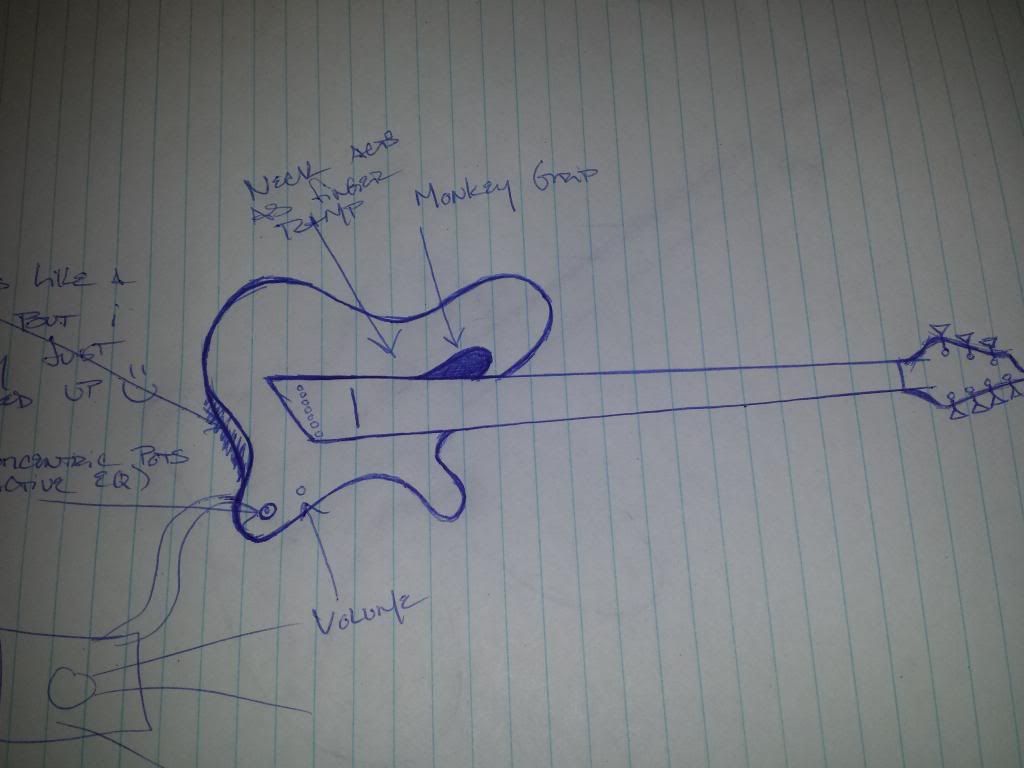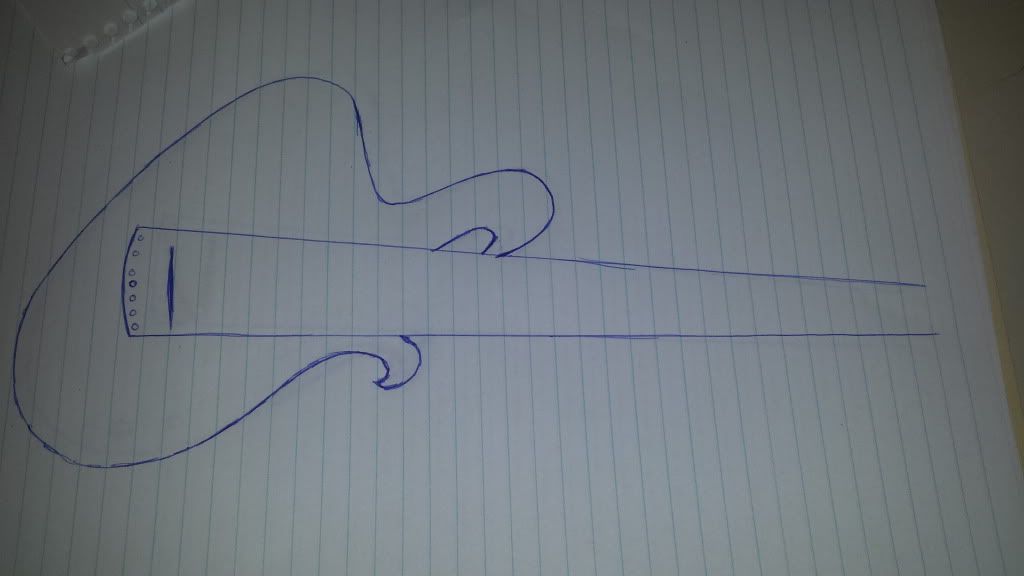Konfyouzd
Return of the Dread-I
I've been looking around forever and I just can't seem to find the bass I want.
Seven strings and fretless. Seems simple right? But, I also realize the number of people in the world playing such a thing are more than likely quite few and far between.
I have also gotten a LOT of suggestions to just get a 7 stringer like the BTB7 and defret it. I could. But I would feel weird if I ended up ruining that nice bass doing such a thing. It's like tearing apart someone else's artwork such that no one can enjoy it and the idea of doing something like that makes me a sad sad panda.
I AM however, okay with starting an art project and failing so long as I see it through to completion (failure). That said, I'd like to try building a bass and I'd like to try something at least semi ambitious on my first one even though I'm sure I'll have to try it again.
I would *like* to build a neck thru 7 string fretless bass.
The neck would be some combination of maple and wenge and I may add another in like purpleheart or something similar if I opt for a 7pc over a 5pc neck.
Wings would be ash as I just see that commonly used as a relatively light body weight.
Now here's where it gets tricky... I would like to make this a headless design as well, but I'm okay with saving that for a later build.
IF I go with a headed design, I'd probably do individual bridge saddles like on the BTB. I was honestly planning on copying a lot of specs from the BTB as far as nut width and string spacing go although I may make my string spacing just a hair more narrow.
The last thing I'm not entirely sure about is I have been reading the "What do I need to start building threads" and I've seen that between myself and a friend that's interested in getting started on this with me, we have a lot of the tools necessary.
What we REALLY need now is clamps (shit tons), a band saw, a router and a drill press.
I was under the impression that drill presses and band saws were a lot more expensive than they actually are. What size should I get though? I've been looking at them and the price seems to depend largely on that factor.
Also, does it really matter which router I choose? They all seem relatlively similar.
Thanks guys!
I know some of these questions have been at least somewhat answered in some form or another, I just needed some clarification on whether or not I'm n the right track. I'm working on the body and headstock shapes still. I'll post pics of what I come up with once I do if anyone is interested.

Seven strings and fretless. Seems simple right? But, I also realize the number of people in the world playing such a thing are more than likely quite few and far between.
I have also gotten a LOT of suggestions to just get a 7 stringer like the BTB7 and defret it. I could. But I would feel weird if I ended up ruining that nice bass doing such a thing. It's like tearing apart someone else's artwork such that no one can enjoy it and the idea of doing something like that makes me a sad sad panda.
I AM however, okay with starting an art project and failing so long as I see it through to completion (failure). That said, I'd like to try building a bass and I'd like to try something at least semi ambitious on my first one even though I'm sure I'll have to try it again.
I would *like* to build a neck thru 7 string fretless bass.
The neck would be some combination of maple and wenge and I may add another in like purpleheart or something similar if I opt for a 7pc over a 5pc neck.
Wings would be ash as I just see that commonly used as a relatively light body weight.
Now here's where it gets tricky... I would like to make this a headless design as well, but I'm okay with saving that for a later build.
IF I go with a headed design, I'd probably do individual bridge saddles like on the BTB. I was honestly planning on copying a lot of specs from the BTB as far as nut width and string spacing go although I may make my string spacing just a hair more narrow.
The last thing I'm not entirely sure about is I have been reading the "What do I need to start building threads" and I've seen that between myself and a friend that's interested in getting started on this with me, we have a lot of the tools necessary.
What we REALLY need now is clamps (shit tons), a band saw, a router and a drill press.
I was under the impression that drill presses and band saws were a lot more expensive than they actually are. What size should I get though? I've been looking at them and the price seems to depend largely on that factor.
Also, does it really matter which router I choose? They all seem relatlively similar.
Thanks guys!
I know some of these questions have been at least somewhat answered in some form or another, I just needed some clarification on whether or not I'm n the right track. I'm working on the body and headstock shapes still. I'll post pics of what I come up with once I do if anyone is interested.






 That Roya is on my top 3 basses ever. Just to show, a buddy building basses, that started on his balcony, with just a router and a hand driller:
That Roya is on my top 3 basses ever. Just to show, a buddy building basses, that started on his balcony, with just a router and a hand driller:
